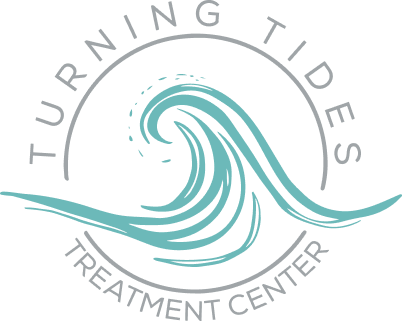Understanding the Cocaine Withdrawal Timeline
Cocaine addiction poses significant challenges, both physically and psychologically, for those affected. Data from the National Vital Statistics System shows that the rate of drug overdose deaths involving cocaine was stable between 2009 and 2013, then nearly tripled from 1.6 per 100,000 in 2013 to 4.5 in 2018. With this increase in overdose deaths, it’s more important than ever to understand the treatment options available for cocaine addiction.
Understanding the cocaine withdrawal timeline is essential for anyone embarking on the path to recovery. This knowledge empowers individuals to prepare for the difficulties they might face, equipping them with the necessary insights to manage expectations and engage in effective treatment strategies.
What is Cocaine?
Cocaine is a potent central nervous system stimulant extracted from the leaves of the coca plant. It’s often consumed for its immediate euphoric effects, which include heightened energy and a sense of euphoria. These effects, however, are fleeting, leading to repeated use to sustain the high, which can quickly spiral into addiction. Cocaine affects neurotransmitters such as dopamine in the brain, which are crucial for reward and pleasure pathways, leading to significant addiction potential.
Understanding Withdrawal
Withdrawal is a biological and psychological response that occurs when a person stops using a substance upon which their body has become dependent. Cocaine, as a highly addictive stimulant, leads to complex withdrawal processes that reflect the extent of its impact on brain chemistry.
Biological Aspects:
Cocaine stimulates the central nervous system and increases levels of dopamine, a neurotransmitter associated with pleasure and reward. Regular use changes the brain’s chemistry to expect continuous stimulation. When cocaine use is abruptly stopped, the brain experiences a significant deficit in dopamine, leading to withdrawal symptoms.
Physiologically, withdrawal manifests as the body attempts to regain homeostasis. This process can be uncomfortable, painful, and potentially dangerous, depending on the severity of the addiction and the physical condition of the individual.
Psychological Aspects:
The psychological challenges of cocaine withdrawal are often more difficult to manage than the physical ones. Users may experience intense cravings, anxiety, depression, and mood swings. These symptoms arise as the psychological dependence on the drug remains strong even when the physical need subsides.
Coping with these changes requires a comprehensive understanding and a strategic approach, as the mental addiction to cocaine can lead to relapse if not adequately addressed.
Duration and Severity:
The duration and severity of withdrawal symptoms can vary greatly among individuals, influenced by factors such as the length of drug use, the amounts taken, personal health conditions, and the presence of co-occurring mental health disorders.
Typically, acute withdrawal symptoms peak within the first few days and gradually diminish over the course of several weeks. However, some psychological effects can linger for months, known as Post-Acute Withdrawal Syndrome (PAWS).
Cocaine Withdrawal Timeline
The journey through cocaine withdrawal is uniquely challenging due to the powerful psychological dependency it creates. This timeline provides a framework to understand what individuals can expect during the process:
Immediate Effects
First 24 Hours: Immediately after the last cocaine use, individuals often experience a significant crash characterized by intense cravings, profound anxiety, and an overwhelming sense of fatigue. These symptoms arise as the brain reacts to the sudden drop in dopamine levels that the drug had previously elevated.
Short-term Withdrawal Phase
Days 1 to 3: The first three days can be particularly tough, with symptoms peaking in intensity. Users may experience a continuation of strong cravings, along with mood disturbances such as irritability and anger, heightened anxiety, and even physical symptoms like shaking, sweating, and nausea. Sleep disturbances such as insomnia are common, as the body begins to adjust to the absence of the stimulant.
Days 4 to 7: During this phase, while the initial physical symptoms may start to wane, emotional and psychological symptoms often persist or even increase. Depression may set in, as the euphoria of cocaine use is replaced by a stark contrast in mood. Cravings may remain strong, tempting relapse, and individuals often struggle with concentration and motivation.
Long-term Withdrawal Phase
Weeks 1 to 4: After the first week, the acute symptoms of withdrawal generally lessen, but less intense symptoms can persist. Emotional instability continues, and many experience anhedonia—the inability to feel pleasure. This period requires strong support systems as the psychological grip of the drug remains.
Beyond the First Month: For many, this phase marks the onset of Post-Acute Withdrawal Syndrome (PAWS), where symptoms can fluctuate but generally include chronic fatigue, ongoing depression, anxiety, and cravings. These symptoms can be sporadic and may last for several months to a year, depending on individual circumstances.
Symptoms and Side Effects of Cocaine Withdrawal
The symptoms of cocaine withdrawal are a mix of physical, emotional, and psychological responses to the absence of the drug:
- Physical Symptoms: Common physical symptoms include fatigue, increased appetite, slowed activity, and physical agitation. Some may experience chills, muscle aches, and tremors. Intense headaches are frequent as the brain’s chemistry adjusts to function without the stimulant.
- Psychological Symptoms: Cocaine withdrawal profoundly affects the psyche. Users often report feeling irritability, mood swings, and intense cravings. Anxiety and depression can be particularly severe due to the changes in brain chemistry, specifically with neurotransmitters that regulate mood and stress. Disturbed sleep patterns, vivid, unpleasant dreams, and insomnia are also common, further complicating the emotional stability of the individual.
- Cognitive Symptoms: Cognitive impairments during withdrawal include difficulty concentrating, forgetfulness, and slowed thinking. The psychological fog is often frustrating to individuals trying to resume normal daily activities and responsibilities.
Factors Affecting the Withdrawal Timeline
The withdrawal experience varies significantly from person to person due to multiple factors:
- Amount and Frequency of Usage: Higher doses and more frequent use typically lead to more severe withdrawal symptoms and a longer detox process. Long-term users might experience more intense and prolonged symptoms.
- Individual Health Factors: Overall physical and mental health plays a crucial role. Those with underlying mental health issues, such as depression or anxiety, may have more severe psychological symptoms. Physical health affects how quickly the body can cleanse itself of the substance and recover from its effects.
- Support System and Environment: A supportive environment is crucial during withdrawal. Those with strong family support, access to counseling, and a stable living situation are more likely to successfully navigate withdrawal symptoms than those who face it alone or in unstable conditions.
- Genetics and Biology: Genetic factors can influence how a person metabolizes cocaine, the severity of dependency, and their susceptibility to addiction and withdrawal symptoms.

The Importance of Medical Supervision
Withdrawal can present significant health risks, including severe depression and suicidal thoughts. Medical supervision during detox provides a safer environment for managing these risks, with access to medication that can alleviate severe symptoms and support overall recovery.
Cocaine Addiction Treatment Options
An effective treatment program for cocaine withdrawal is multi-faceted, addressing both the physical and psychological aspects of addiction. Here’s an overview of the primary drug addiction treatment modalities:
Detoxification:
The first step in treating cocaine withdrawal is typically detoxification, which involves managing acute physical symptoms and ensuring the individual’s safety. Medical detox can be performed in an inpatient setting, where healthcare professionals monitor the patient’s health and administer medications to alleviate withdrawal symptoms.
Medications can include antidepressants to manage depression, or other pharmacological interventions to stabilize mood and reduce cravings. The goal is to create a stable physical state from which the individual can begin recovery.
Therapy and Counseling:
Various therapeutic approaches are crucial for addressing the psychological aspects of cocaine addiction. Cognitive-behavioral therapy (CBT) is particularly effective as it helps modify the patient’s thinking and behavior related to drug use.
Other therapy forms, such as group therapy, family therapy, and motivational interviewing, are also used to support recovery. These therapies provide tools for managing stress, triggers, and cravings, and they help in rebuilding relationships damaged by addiction.
Aftercare and Relapse Prevention:
Long-term recovery from cocaine addiction involves continuous aftercare and relapse prevention strategies. This includes ongoing therapy, support groups like Cocaine Anonymous, and lifestyle changes to support physical and mental health.
Recovery is a lifelong process, and sustaining it requires continuous effort and support from a community of recovering addicts and professionals.
FAQs
The first signs of cocaine withdrawal typically include profound drug cravings for and cocaine cravings, accompanied by anxiety and restlessness. These symptoms can manifest within hours after the last usage and signal the onset of the withdrawal process.
While it is not possible to completely avoid withdrawal symptoms, their intensity can be significantly reduced through medical supervision and appropriate treatment approaches. These methods help manage the physical and psychological discomfort associated with withdrawal.
The most intense withdrawal symptoms usually last from a few days to about a week. However, the exact duration can vary significantly among individuals based on their usage pattern and overall health.
Yes, relapse is relatively common among individuals recovering from cocaine addiction, particularly during the early stages of withdrawal. Continuous support and treatment are crucial to minimize the risk of relapse.
Recommended treatments for cocaine withdrawal typically include medical detoxification to safely manage acute physical symptoms, behavioral therapies to address psychological impacts, and support groups to provide ongoing encouragement and relapse prevention strategies.
Cocaine withdrawal is generally not life-threatening in terms of physical symptoms, but it can pose serious risks due to psychological effects such as severe depression and potentially suicidal thoughts.
Substance Abuse Treatment in Orange County
Navigating the cocaine withdrawal timeline is a crucial step toward recovery. With the right support and treatment, individuals can overcome the challenges posed by withdrawal and move towards a healthier, substance-free life.
If you or a loved one are struggling with cocaine addiction or a substance use disorder and looking for a cocaine addiction treatment and cocaine detox center, get in touch with Turning Tides Treatment. Our Orange County treatment facility’s individualized treatment options are here to help individuals overcome the challenges of addiction.
Clinically Reviewed by:

Matthew is a licensed marriage and family therapist and clinical supervisor in Orange County, California. Matthew has an extensive history working with the substance abuse and mental health population and is committed to client care with an ethical approach to treatment. Matthew utilizes a solution-focused, cognitive behavioral approach to therapy. He emphasizes the importance of creating a recovery environment which supports deep and meaningful sober connection, a system of accountability, daily structure and healthy routine, and an aftercare plan which will support continued sobriety post-treatment.
